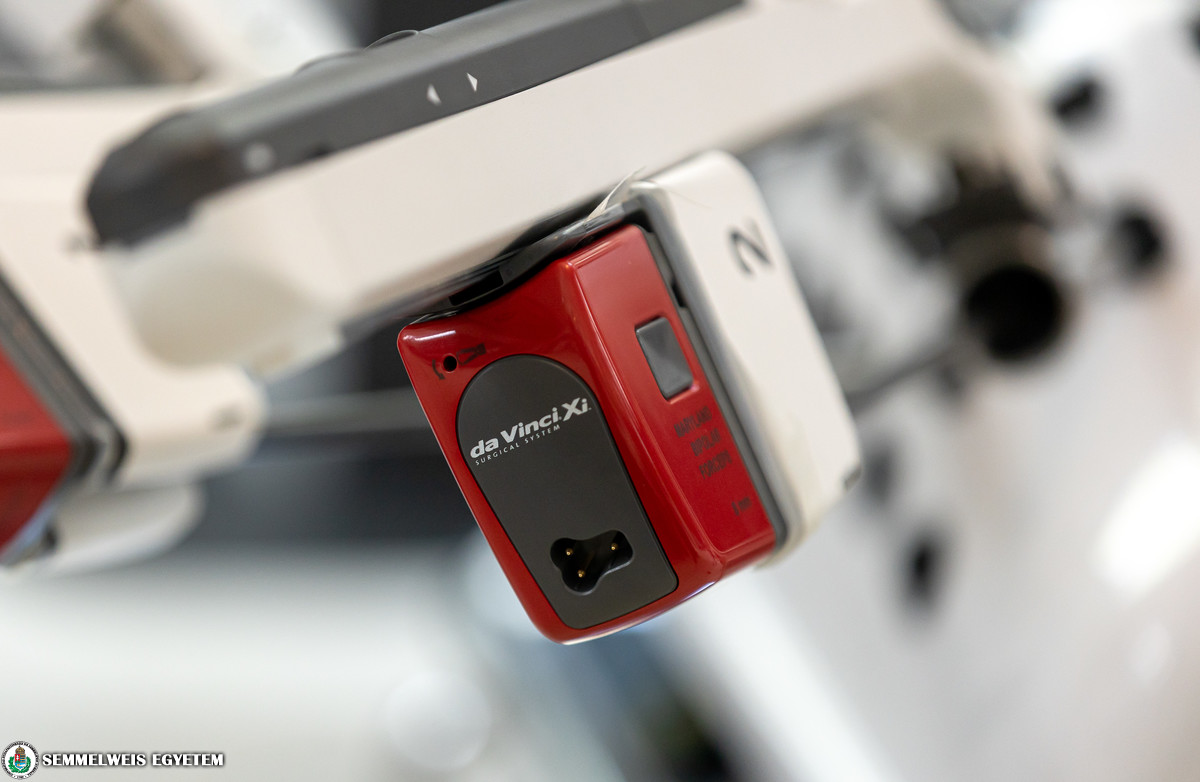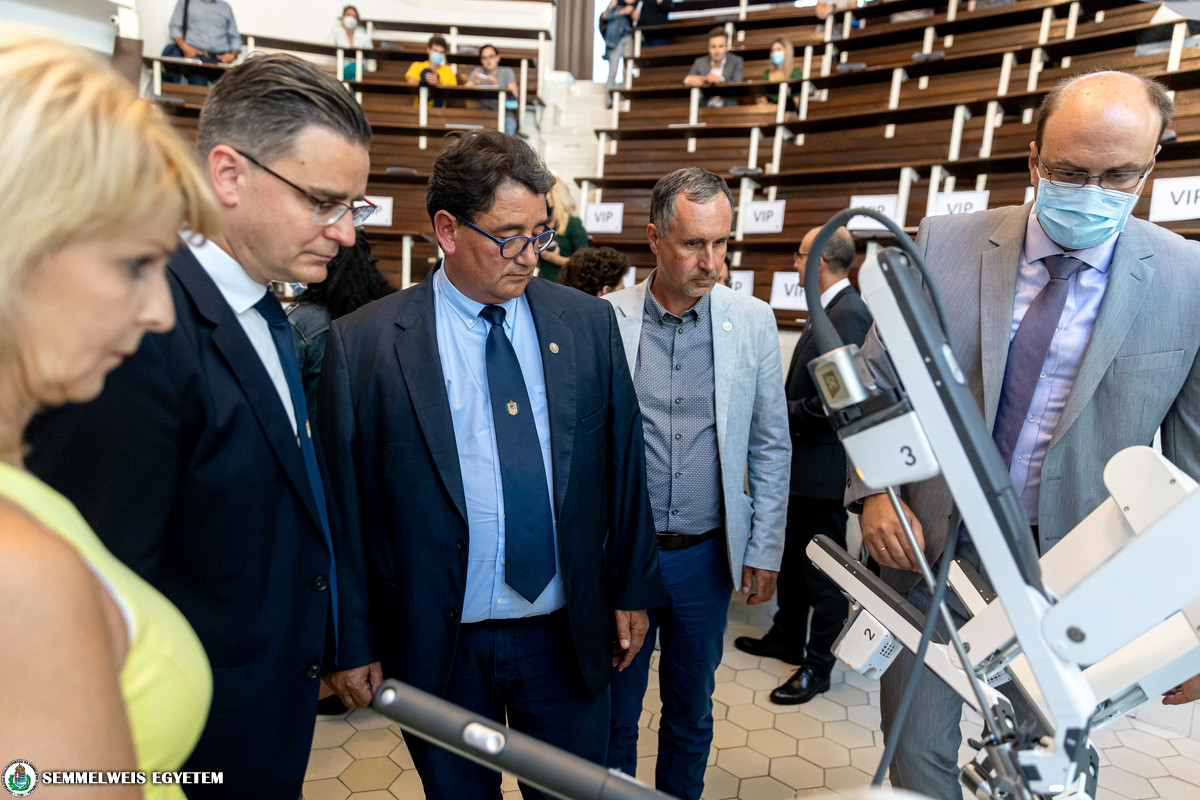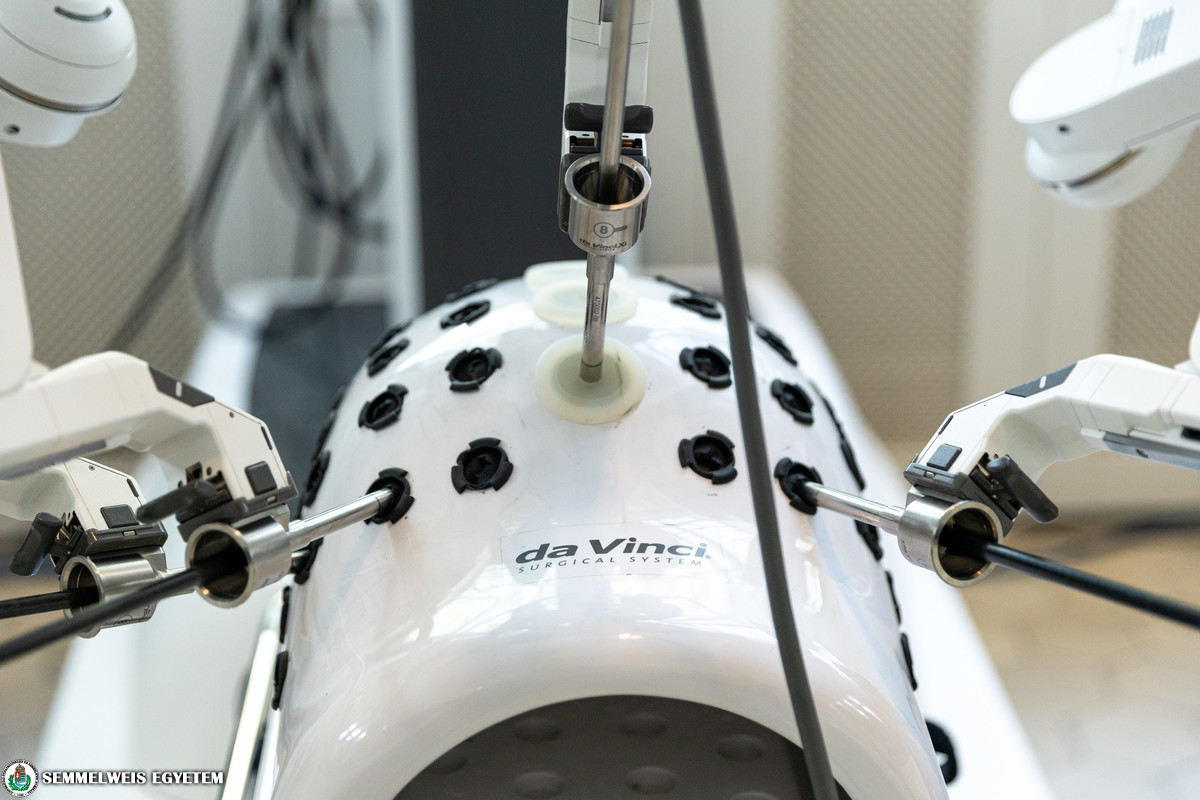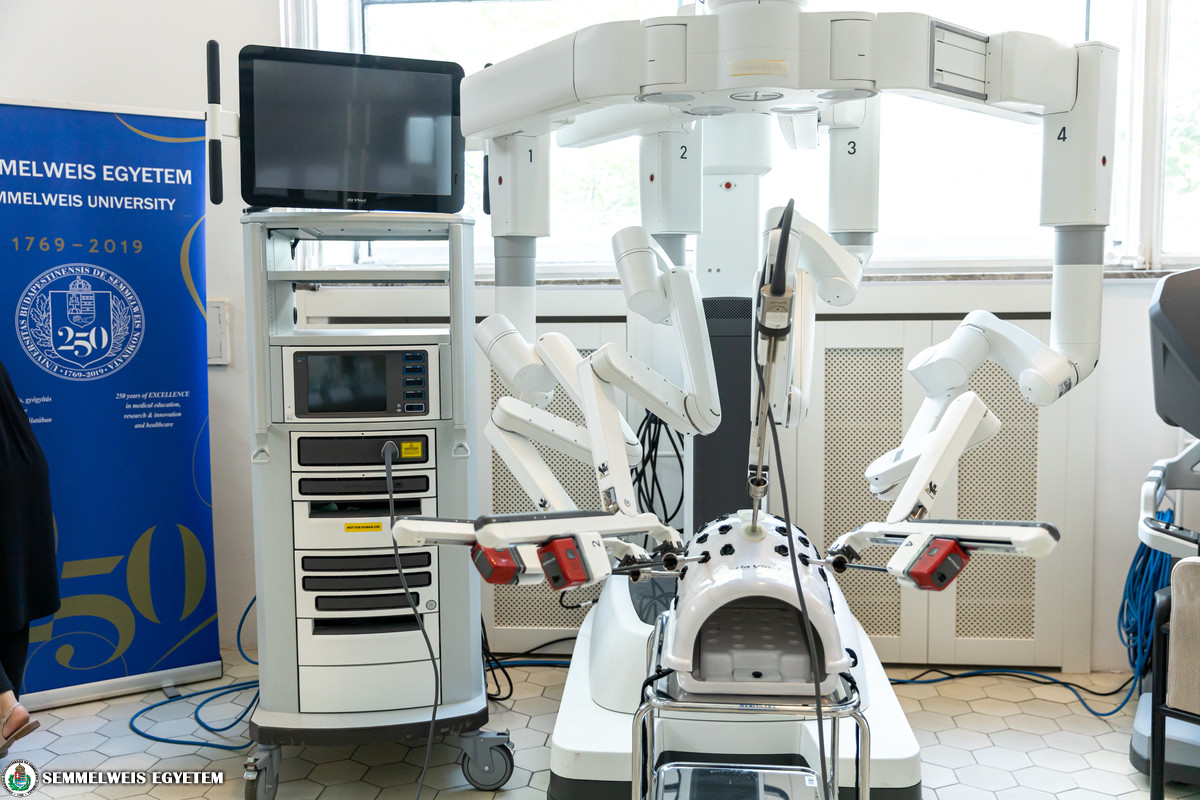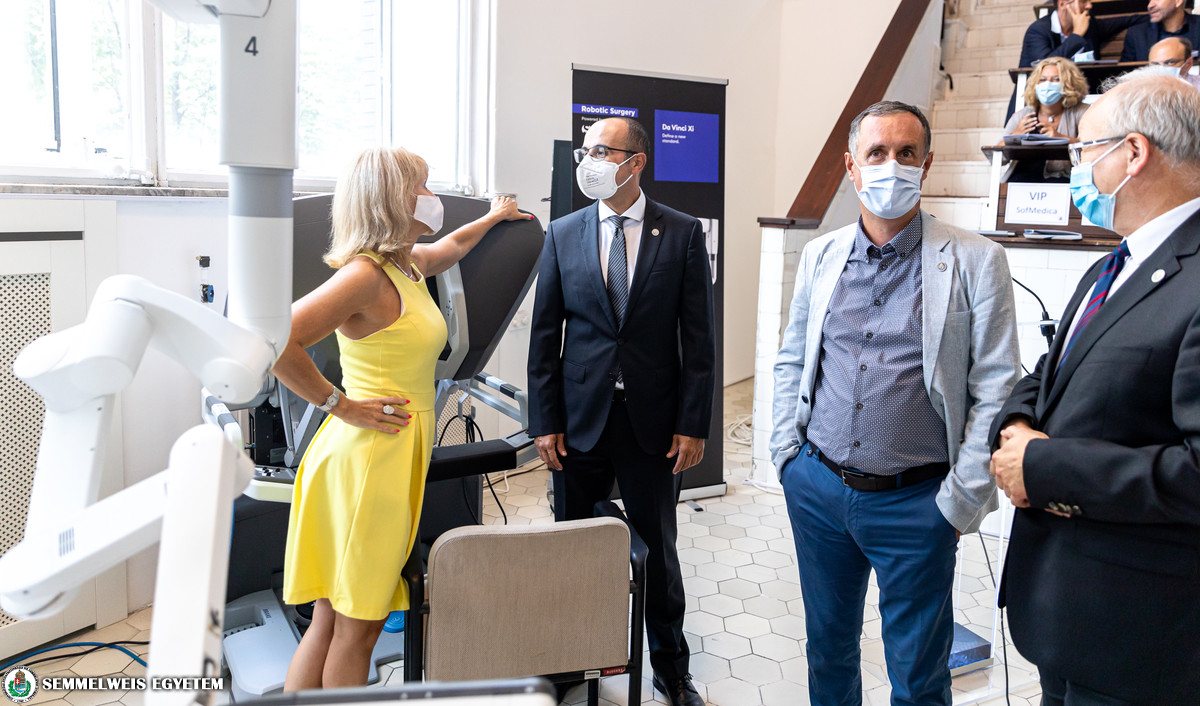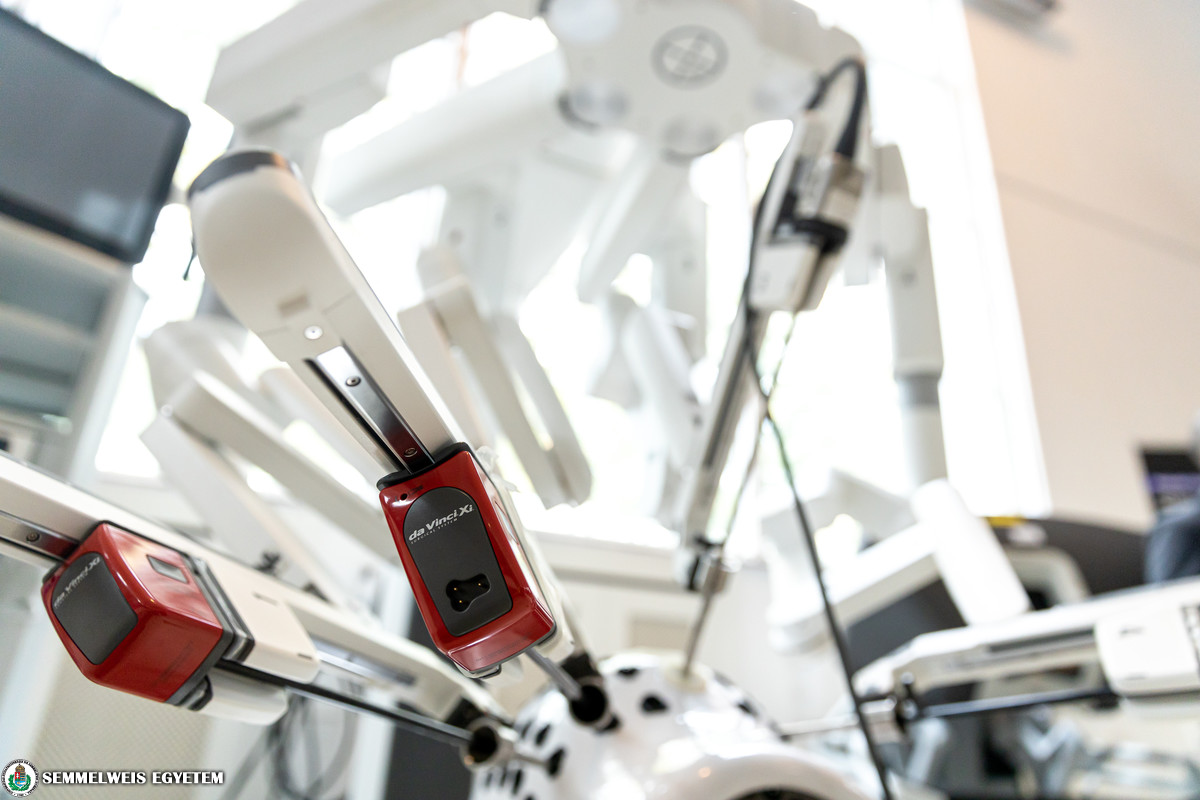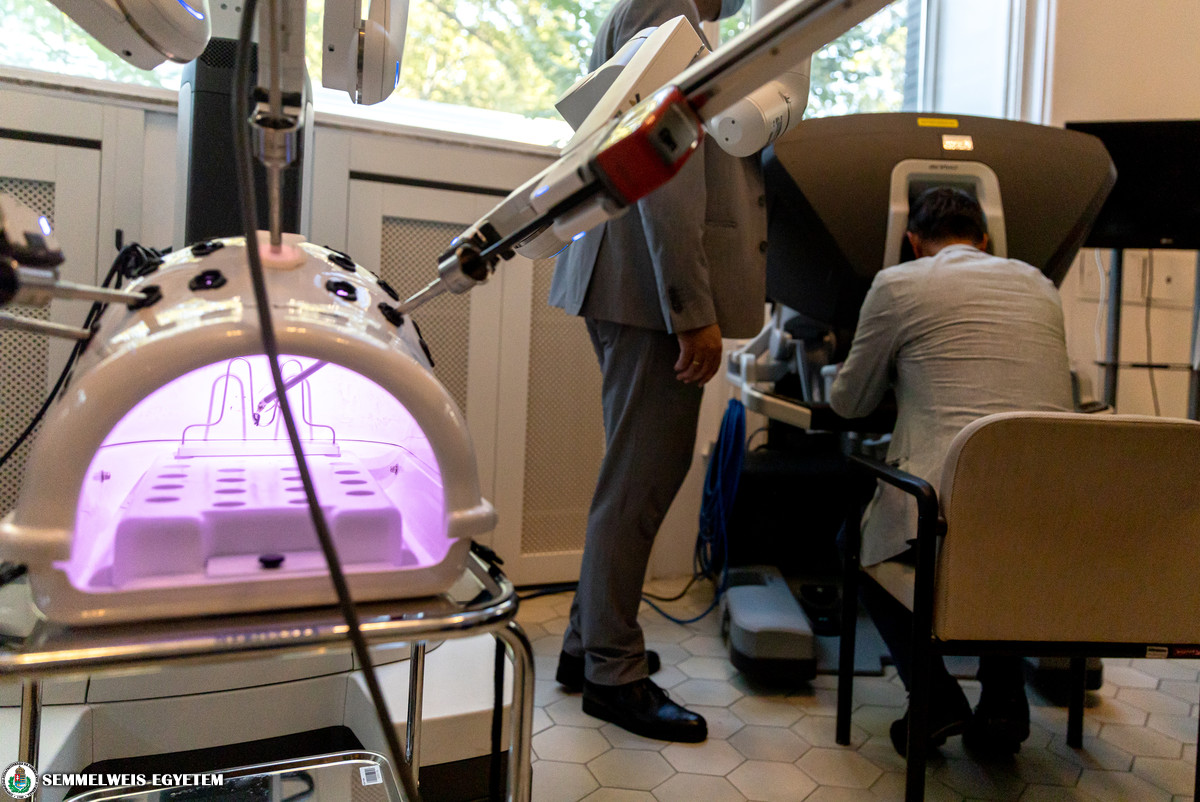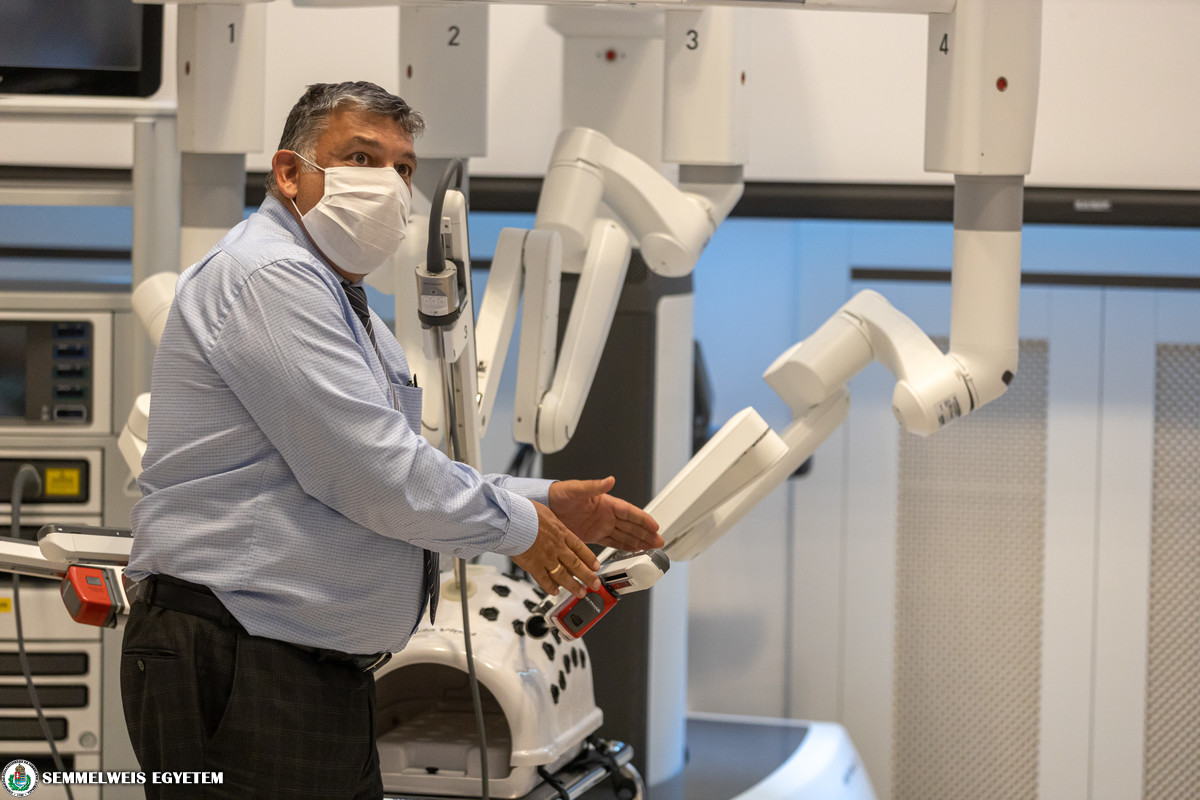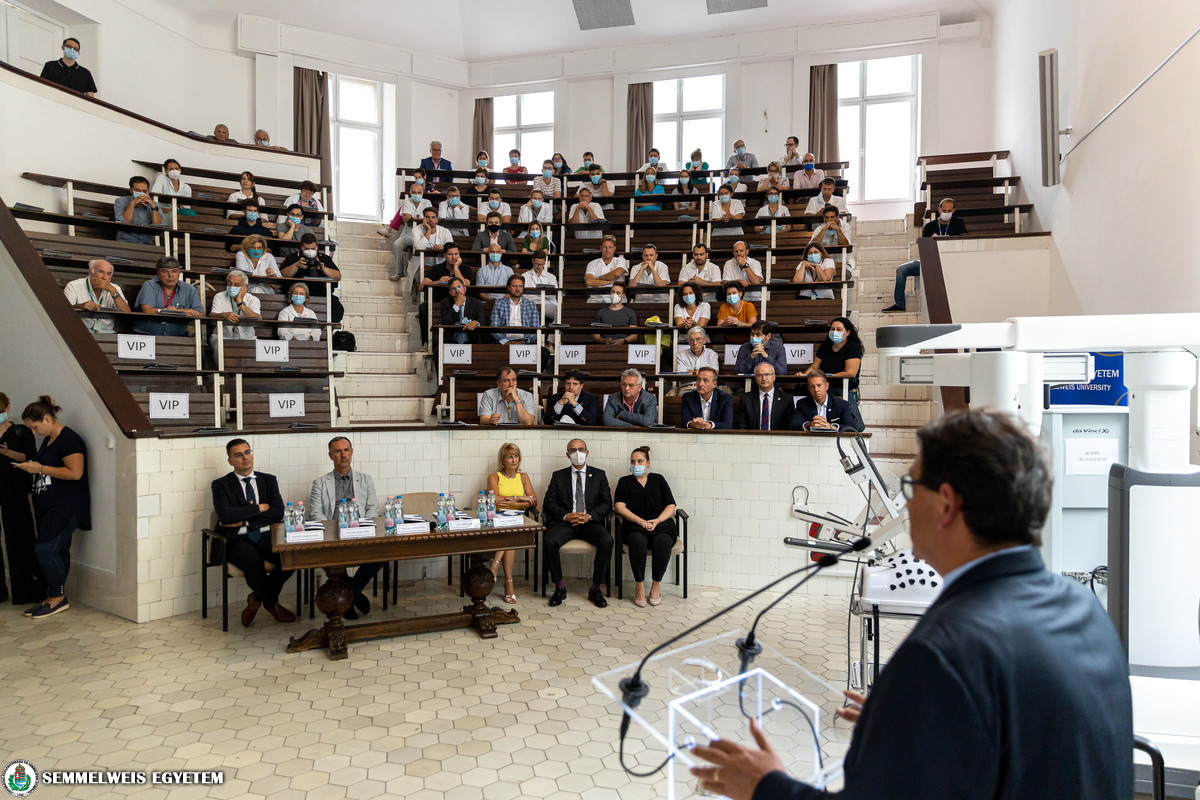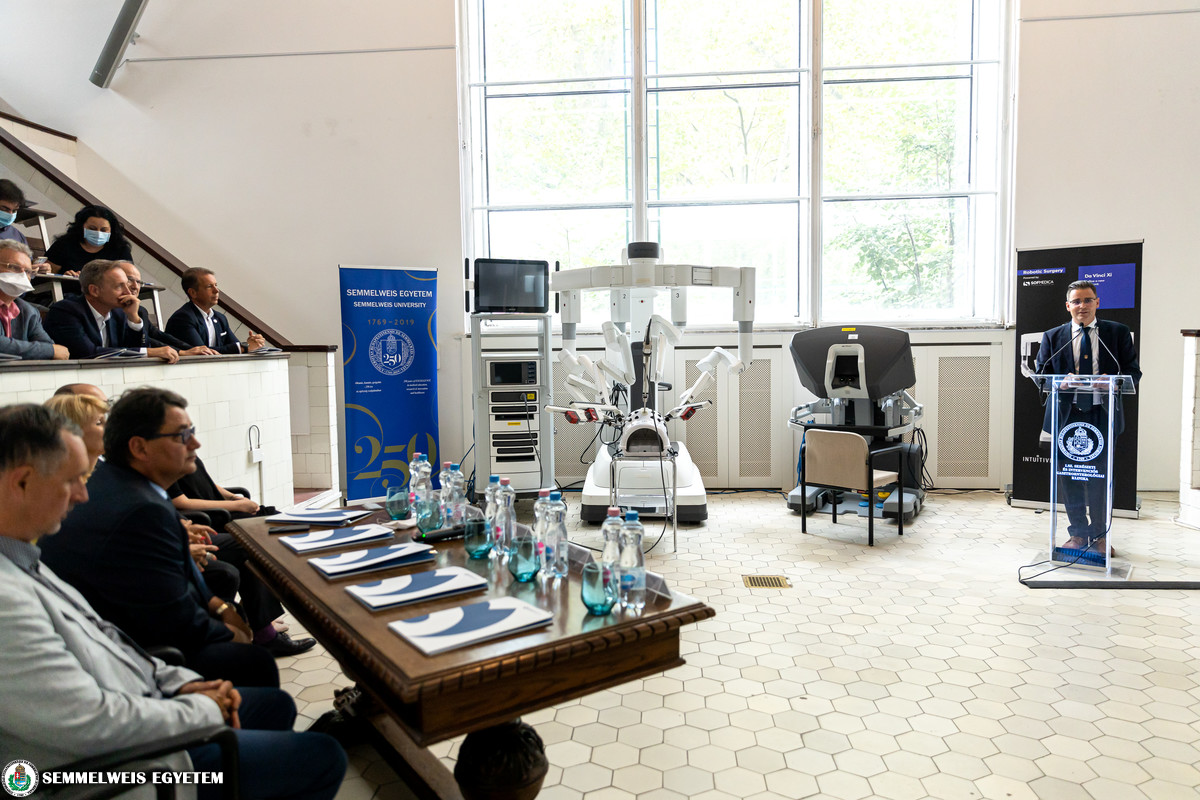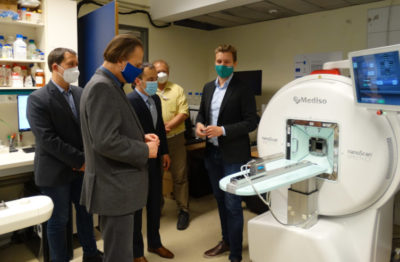Students and staff of Semmelweis University representing manual fields of medicine had the opportunity to get an insight into the operation of with da Vinci Xi, the latest surgical robot at a demonstration during a test day. At the event held at the 1st Department of Surgery and Interventional Gastroenterology, Dr. Béla Merkely, Rector, Dr. Attila Szijártó, Director of the Department and Harris Palaondas, Managing Director of company distributing the device, held presentations. The Rector announced that Semmelweis University will be the first in Hungary to launch a robotic surgery program in patient care and education. Not only patients, students and residents will benefit from the program, but it will also modernize and develop the Hungarian healthcare sector in terms of technology and science.
For the first time in Hungary, the latest generation of surgical robots, the da Vinci Xi, was presented at Semmelweis University. The device was installed at the university for two days, courtesy of its distributor (SofMedica – Life Saving Innovation), and was set up and tested by university staff and students in the classroom of the 1st Department of Surgery and Interventional Gastroenterology on 24 August.
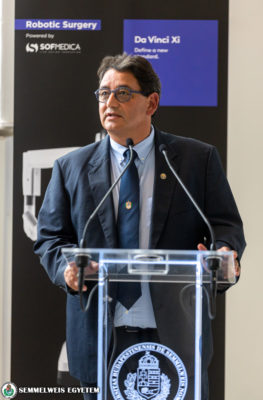 In his speech, Dr. Béla Merkely emphasized that from the beginning of his career as Rector, and even earlier, as the President of the Clinical Center, he has been working to bring such a machine to the university. He added that the most difficult task in such a project is to create an experienced, multidisciplinary surgical community to operate the machine, as well as to provide the funding of the machine.
In his speech, Dr. Béla Merkely emphasized that from the beginning of his career as Rector, and even earlier, as the President of the Clinical Center, he has been working to bring such a machine to the university. He added that the most difficult task in such a project is to create an experienced, multidisciplinary surgical community to operate the machine, as well as to provide the funding of the machine.
“In order to make a Da Vinci robotic surgical device available at Semmelweis University in the future, a community of young doctors and experienced professors interested in robotic surgery has already been formed, who have also begun their studies in this field. In addition to patient care, the machine may also be used in education and specialist training, therefore the cost of the surgeries performed with the device is covered by the university’s education funding contract with the support of the Ministry for Innovation and Technology, but in the future, interventions will also be supported by the National Health Insurance Fund of Hungary”, the Rector pointed out.
According to Dr. Béla Merkely, the new surgical technique will enable more complex urological, gynecological, abdominal and head and neck surgeries. Therefore, da Vinci will be of great benefit to medical students and surgical residents, as well as to patients since this is exactly what the three-pillar mission of the university, innovation, health care and education, means.
I truly hope that the machine will also contribute to the further development of Semmelweis University. I would like to thank my fellow surgeon colleagues for devoting time and energy to be able to perform the best, most accurate surgeries with the least complications with the help of the machine in the future”
– said Dr. Béla Merkely.
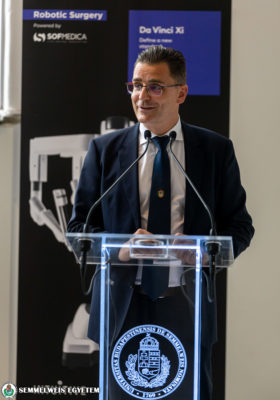 Dr. Attila Szijártó, Director of the 1st Department of Surgery and Interventional Gastroenterology, presented the history and development of Hungarian and international surgery, with special focus on the opportunities of robotic surgery.
Dr. Attila Szijártó, Director of the 1st Department of Surgery and Interventional Gastroenterology, presented the history and development of Hungarian and international surgery, with special focus on the opportunities of robotic surgery.
“Only 110 years have passed between the publication of the pioneering work of Gyula Dollinger, former head of the department and the first Hungarian surgeon performing gallstone surgery, and the article on the intelligent, semi-automatic surgical system. This is what indicates the progress of surgery”, the director highlighted, who then took account of the most significant surgical innovations from the Antiquity to the achievements of laparoscopic surgery.
“Arguments previously opposing laparoscopic surgeries, such as higher operating costs or a long learning curve, have become negligible, as resident surgeons now perform more laparoscopic gallbladder removal surgeries by the time of their specialist examination than open gallbladder removal surgeries”, pointed out Dr. Attila Szijártó.
He also added that any surgery that is currently performed with such technique can be performed with a robot, but this is not always true the other way round. For example, certain procedures related to liver surgery and pancreatic tumors are more comfortable and ergonomic with a surgical robot.
The director emphasized that the robotic surgery program launched at the university would also mean major development and modernization in health care, as certain interventions may be performed more safely and precisely with such a device. In addition, the development will reduce the time of hospitalization, speed up the recovery of patients, but the technology may also help train young surgeons and make it more attractive for them to stay and work in Hungary.
“Minimally invasive surgery is of high standards in Hungary, both in Europe and globally. The next step is to move towards robot-assisted surgery, in which Semmelweis University will hopefully set an example by pioneering in this field”, emphasized Dr. Attila Szijártó.
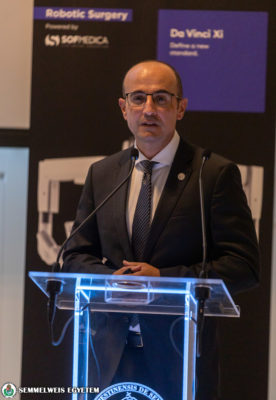 Afterwards, Harris Palaondas, Managing Director of SofMedica Life Saving Innovation, presented the company’s activities and the benefits of da Vinci Xi, the latest generation surgical robotic system. SofMedica has been operating in four countries in Europe (Romania, Greece, Bulgaria, Cyprus) since 1994 and in Hungary since April 2021. So far, a total of 33 successful robot-assisted surgery programs have been developed in the region treating more than 1 million patients with the company’s robotic systems and training over 20,000 healthcare professionals to use them. The da Vinci surgical robotic system is used worldwide, more than 6,000 of them are currently in operation, and more than 1.2 million da Vinci surgeries were performed last year. As an example, he said that typically every operating room in the USA has its own da Vinci system, while in our region, hospitals have now started to acquire their second and third machines to go with their first system.
Afterwards, Harris Palaondas, Managing Director of SofMedica Life Saving Innovation, presented the company’s activities and the benefits of da Vinci Xi, the latest generation surgical robotic system. SofMedica has been operating in four countries in Europe (Romania, Greece, Bulgaria, Cyprus) since 1994 and in Hungary since April 2021. So far, a total of 33 successful robot-assisted surgery programs have been developed in the region treating more than 1 million patients with the company’s robotic systems and training over 20,000 healthcare professionals to use them. The da Vinci surgical robotic system is used worldwide, more than 6,000 of them are currently in operation, and more than 1.2 million da Vinci surgeries were performed last year. As an example, he said that typically every operating room in the USA has its own da Vinci system, while in our region, hospitals have now started to acquire their second and third machines to go with their first system.
Harris Palaondas highlighted that robotic-assisted surgical systems allow surgeons to perform more precise surgeries, which has a number of advantages for patients, physicians and hospitals alike. He emphasized the improved 3D visualization capabilities and the enhanced version of of surgical instruments among the new developments realized in the da Vinci Xi system. He also added that the company constantly monitors the condition of the machines online, therefore they can tell if a part needs to be replaced and deliver it without any special request. He also mentioned that the company plans to introduce more and more new, innovative technologies in Hungary. da Vinci surgical robots are currently marketed in Hungary exclusively by SofMedica Life Saving Innovation.
Following the presentations, representatives of the manual fields of medicine as well as students could ask questions about robotic surgery and even had the opportunity to try the machine.
Ádám Szabó, Tamás Deme
Photo: Attila Kovács – Semmelweis University
Translation: Katalin Illés-Romhányi

